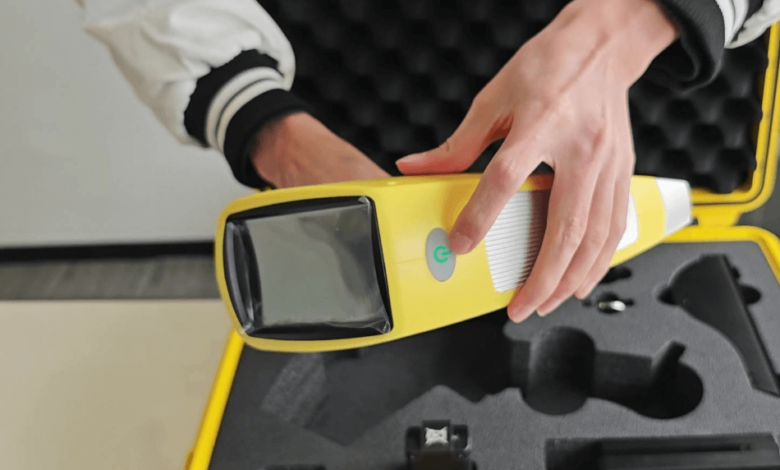The XRF Analyzer: Revolutionizing Elemental Analysis Across Industries

In today’s fast-paced and data-driven industrial world, precision and speed in material analysis are non-negotiable. Whether you’re in mining, metallurgy, environmental testing, or quality control, identifying and quantifying the elements in a material is essential. This is where the xrf analyzer becomes a game-changing instrument. With its capability to deliver rapid, non-destructive, and accurate elemental analysis, the xrf analyzer has become a mainstay in countless laboratories and field applications.
In this article, we explore what an xrf analyzer is, how it works, its top applications, and how businesses can benefit from integrating this versatile tool into their operations.
What Is an XRF Analyzer?
An xrf analyzer (X-ray fluorescence analyzer) is a scientific instrument used to determine the elemental composition of materials. The technology is based on the principle of X-ray fluorescence, which involves irradiating a sample with primary X-rays and then measuring the secondary (fluorescent) X-rays emitted by the atoms in the sample.
Each element has a unique X-ray signature, allowing the xrf analyzer to identify and quantify the elements in a sample quickly and accurately. Because the analysis is non-destructive, it preserves the integrity of the sample, making it ideal for quality assurance, environmental compliance, forensic investigations, and much more.
See also: How High-Performance Custom Websites Can Help Tech Startups
How Does the XRF Analyzer Work?
The xrf analyzer operates using a three-step process:
- Excitation: The analyzer emits primary X-rays from an X-ray tube toward the surface of the sample.
- Emission: The atoms in the sample absorb this energy and become excited, subsequently releasing secondary (fluorescent) X-rays as they return to a stable state.
- Detection: The analyzer detects these secondary X-rays and interprets their energy levels to determine the types and concentrations of elements present.
This technique allows for both qualitative and quantitative analysis of elements ranging from sodium (Na) to uranium (U), depending on the analyzer’s configuration and capabilities.
Key Benefits of Using an XRF Analyzer
The widespread adoption of the xrf analyzer can be attributed to its wide range of advantages:
🕒 Fast and Efficient
The device provides near-instant results, with many tests completed in under a minute. This speed is invaluable in time-sensitive operations such as mining exploration or industrial production.
🔬 Non-Destructive Testing
The sample remains unaltered after analysis, making it suitable for irreplaceable materials like historical artifacts, artworks, or precious metals.
📦 Portability
Many xrf analyzers are handheld, allowing for field testing in remote or challenging environments. They can be easily transported to mines, warehouses, or construction sites.
🎯 High Accuracy
With proper calibration and sample preparation, modern xrf analyzers achieve high precision and accuracy, even in complex matrices.
💻 Data Management
Advanced models include onboard data storage, GPS tracking, wireless connectivity, and integration with laboratory information management systems (LIMS).
Common Applications of the XRF Analyzer
The xrf analyzer is incredibly versatile and finds applications across diverse industries:
🏭 Industrial Manufacturing
Manufacturers use xrf analyzers to verify the composition of raw materials and final products. This ensures consistency and compliance with material specifications.
⛏ Mining and Mineral Exploration
Geologists and mining engineers use handheld xrf analyzers in the field to identify ore deposits, assess grades, and guide drilling operations with real-time data.
🌍 Environmental Monitoring
Environmental agencies rely on xrf analyzers to detect heavy metal contamination in soil, dust, and sediment. This supports regulatory compliance and remediation planning.
🔩 Metal Sorting and Recycling
Scrap yards and recycling facilities utilize xrf analyzers to sort metals quickly and efficiently. Identifying alloys and separating materials boosts operational efficiency and profitability.
🧪 Laboratory Research
Academic institutions and research facilities use xrf analyzers for advanced studies in material science, geochemistry, and solid-state physics.
🧬 Forensics and Archaeology
XRF is used to analyze evidence such as paints, metals, or ceramics without damaging the original artifact. This makes it a trusted tool in criminal investigations and heritage conservation.
Types of XRF Analyzers
Depending on the application and environment, different types of xrf analyzers are available:
🔋 Handheld XRF Analyzers
These are portable and battery-powered, designed for on-site testing. They are ideal for mining, recycling, and field-based work.
🧪 Benchtop XRF Analyzers
Benchtop models are larger and more powerful, offering higher resolution and better sensitivity. They are used primarily in laboratories where maximum precision is required.
🔄 Hybrid Systems
Some manufacturers offer modular systems that combine portable functionality with the performance of a benchtop system. These are perfect for labs that require mobility and accuracy.
How to Choose the Right XRF Analyzer
Selecting the best XRF analyzer depends on your specific needs. Here are some critical factors to consider:
✅ Element Range
Ensure the device can detect all elements relevant to your analysis. Some models can detect light elements like magnesium and aluminum, while others focus on heavier elements.
✅ Sample Types
If you plan to test liquids, powders, and solids, choose an analyzer that supports various sample forms without additional preparation.
✅ Sensitivity and Resolution
Higher-resolution detectors provide better separation of closely spaced peaks, enhancing analytical accuracy.
✅ Ease of Use
Look for a model with an intuitive user interface, customizable settings, and helpful software features like automatic calibration and pre-loaded material libraries.
✅ Safety and Compliance
XRF instruments emit radiation, so ensure the device complies with local safety regulations and includes built-in shielding or safety interlocks.
Maintenance and Best Practices
To ensure consistent performance from your xrf analyzer, follow these best practices:
- Regular Calibration: Use certified reference materials to keep your analyzer accurate.
- Clean the Window: Keep the detector window free from dust or debris that can interfere with readings.
- Store Properly: When not in use, store the device in a case or a clean environment to avoid damage.
- Software Updates: Always update your software to access the latest features and performance improvements.
- Operator Training: Ensure staff are trained on proper handling, safety protocols, and sample preparation.
Top XRF Analyzer Brands
Several global manufacturers produce reliable and feature-rich xrf analyzers:
- Thermo Fisher Scientific – Offers robust systems for both field and laboratory use.
- Bruker – Known for high-performance analyzers with advanced detection capabilities.
- Olympus – Provides durable handheld models popular in mining and metals.
- Hitachi High-Tech – Offers user-friendly systems for industrial and lab applications.
- Drawell – A rising player offering cost-effective and accurate xrf analyzers suitable for laboratories and quality control environments.
Final Thoughts
The xrf analyzer stands out as a powerful, versatile, and efficient solution for elemental analysis. From laboratories and research centers to mines and recycling plants, it empowers users with immediate, accurate insights into material composition. As regulatory demands increase and industries prioritize traceability and quality, the value of this tool will only continue to grow.
Investing in an xrf analyzer is not just about gaining a technological advantage—it’s about ensuring accuracy, compliance, and sustainability in every aspect of material evaluation.






